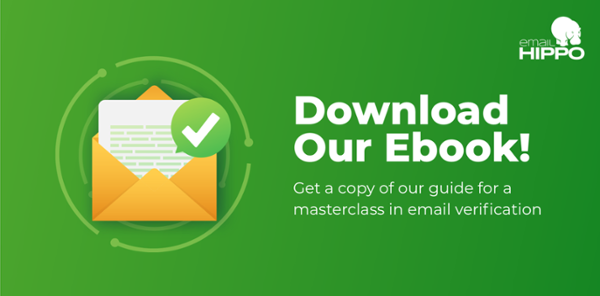
What email domains do you have on your list - does it matter?
If your customers are consumers, chances are you will have email data with plenty of freemail addresses. Those are domains such as Yahoo and Gmail. You're also more likely to have disposable email addresses on your list, with domains that often look like gibberish.
If you're dealing with businesses, you'll have the majority of domains looking like company addresses; it's not very usual to have individuals within companies using freemail accounts. Most of your emails should be instantly recognisable as company addresses. Plenty of companies use Gmail and Outlook to power their emails, (they are the two most popular small-mid size company email provider) but they don't use the generic domain, they use their own, so at first glance you can't tell what email service they are using.
What does it mean for your email deliverability?
When our bulk email address service receives a new file of email addresses, the first thing that happens is a 'shallow verification' process. this process gives an overview of the top domains on the list.
Learn about why email verification is essential for your business
One of the reasons we do this is because it indicates whether the list is likely to contain a high percentage of 'grey listing' email addresses. Grey listing is when we reach out to check an email address are told by the mail server to come back later, so we can prove we are listening and we aren't spammers. Business accounts are more likely to do this, as individual mail servers are set up by IT departments, who'll put in various screens to help keep bad emails from the system. If your email list has a high proportion of grey listing addresses, the email list cleaning process will take longer than a list with few or zero grey lists.

Consumer email addresses are often likely to be a full mail box. In fact, people typically have more than one email address, using one for things they want to read, and another for online shopping and subsequent marketing correspondence. So your carefully crafted emails following up purchases can get some really low open rates if you deal with consumers who aren't buying out of loyalty. That's why multi-channel, engaging content needs to be part of your marketing armoury!
Domains matter because your delivery rates and open rates matter to your sender score.
If you mail to people who don't open your email, your sender score takes a hit. That means your email service provider might not use its 'best' servers for your emails, which means that domain servers might view you as less than squeaky clean, so they might divert your emails to spam. It's a downward spiral. That's why it's good to segment your data, maybe send email campaigns by domain type, or by email status, so you can build the open rate on one list and keep another for your customers who don't engage with you so well.
You can't decide what domains your customers use, but you can consider what their domains tell you. Then you can take action to see how dealing with domains differently can improve your marketing effectiveness.
To find out more ways to improve your email deliverability, make this great little yellow book your friend. For just a few dollars you can learn all you need to know. Email Deliverability by Ken Driscoll
